Nose Surgery in Guadalajara
Search and Compare the Best Clinics and Doctors at the Lowest Prices for Nose Surgery in Guadalajara

Find the best clinics for Nose Surgery in Guadalajara
With Medijump you can browse 4 facilities offering Nose Surgery procedures in Guadalajara. The cheapest price available is $1,314 in Monterrey
Nose Surgery in Mexico
Price: $ 1,314
Nose Surgery in Monterrey
Price: $ 1,314
Nose Surgery in Guadalajara
Price: $ 1,553
Poland offers the best prices Worldwide
Price: $ 101
From 16 verified reviews
Jose Luis Vivanco, 17 September 2019
Plastic surgery with the best Doctors, unique attention with a comprehensive treatment of patients.
From 12 verified reviews
Karina Ortiz, 07 May 2018
I had surgery 3 weeks ago and everything was great, excellent doctors, nurses, facilities and treatment.
Dr. Alfonso Ledesma ENT Consultation Office, located in Av Terranova, Guadalajara, Mexico offers patients Nose Surgery procedures among its total of 9 available procedures, across 3 different specialties. Currently, there's no pricing information for Nose Surgery procedures at Dr. Alfonso Ledesma ENT Consultation Office, as all prices are available on request only, whilst the national average price is approximately $2,763. All procedures and treatments are undertaken by the lead specialist at the Hospital, and they are not accredited by any recognized accreditations institutes
Neoplastic - Cardenas Cirugía Plastica, located in Av Terranova, Guadalajara, Mexico offers patients Nose Surgery procedures among its total of 14 available procedures, across 2 different specialties. Currently, there's no pricing information for Nose Surgery procedures at Neoplastic - Cardenas Cirugía Plastica, as all prices are available on request only, whilst the national average price is approximately £2,168. All procedures and treatments are undertaken by the lead specialist at the Hospital, and they are not accredited by any recognized accreditations institutes
Compare Before & After Photos of _procedure_photos.phpNose Surgery
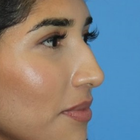
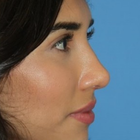
Full-side view
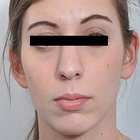

Front view
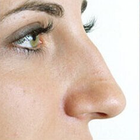
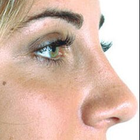
Full-side view
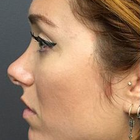
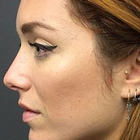
Full-side view
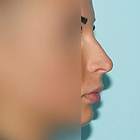
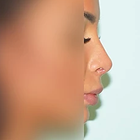
Full-side view

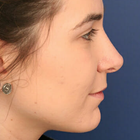
Full-side view
WHY US?
At Medijump, we're making medical easy. You can search, compare, discuss, and book your medical all in one place. We open the door to the best medical providers worldwide, saving you time and energy along the way, and it's all for FREE, no hidden fees, and no price markups guaranteed. So what are you waiting for?

Free

Best Price

Widest Selection

Risk-Free
What you need to know about Nose Surgery in Guadalajara
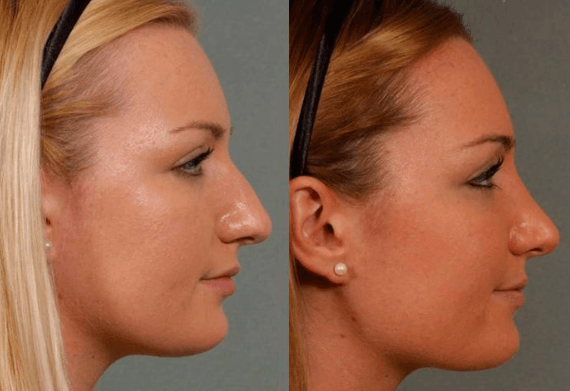
Commonly referred to as a Rhinoplasty, it is the medical term for reshaping of the nose or corrective surgery of the nose. It is one of the most common facial plastic surgeries (Facelift) procedures performed. Nose surgery can be performed to change the consequence of genetics, birth defect or nasal injury. It can be performed to enhance the appearance and/or to improve nasal breathing.
Surgery can be performed to correct nasal humps, the curvature of nose-bridge, nose tip irregularities, and asymmetry in the nostrils. The nasal appearance can be altered in various ways using intra-nasal chisels. Nose surgery procedures generally fall under three types: open rhinoplasty, closed rhinoplasty, and tip rhinoplasty. Rhinoplasty is normally performed under general anesthesia and will not leave any visible scars on the nose.
What does a Nose Surgery Procedure Involve?
Nose surgery is an individualized surgery. Before the surgery, you will need to discuss important factors with your surgeon to determine if it is suitable for you. Your surgeon will review your medical history, including your previous surgeries, medical conditions, and any medications you are taking. You will need to have a complete physical examination, such as blood tests. Your surgeon will also consider your other facial features, the skin on your nose, and what you would like to change or correct. Then, your surgeon will develop a customized plan for you. Two weeks before and after surgery, avoid any medications that contain aspirin or ibuprofen, such as Advil and Motrin IB because these medications can increase bleeding. You will need to also stop taking herbal remedies and over-the-counter supplements. If you are an active smoker, stop smoking because smoking can slow your healing process and increase the risk of getting an infection.
During the actual surgery, you will be given either local anesthesia or general anesthesia. The type of anesthesia depends on how complex the surgery is and what the surgeon would prefer to use. Then, the surgery will start by making incisions inside your nose or at the base of your nose between your nostrils. Your surgeon will reshape the inner bone and cartilage underneath your skin to make a more pleasing appearance.
There are several ways to change the shape of your nasal bones or cartilage, depending on your nose’s structure and how much needs to be removed or added. If only small changes are required, your surgeon may use cartilage taken from deeper inside your nose or your ear. However, for a much larger change, your surgeon may use cartilage from your rib, implants, or bone from other parts of your body. When the changes are finished, your surgeon will place the nose’s skin and tissue back. The incisions will be closed by stitches.
How Long Should I Stay in Guadalajara for a Nose Surgery Procedure?
If everything goes well, you can go back to your hotel on the same day once the effects of anesthesia wear off. However, you will need to stay in a recovery room for a few hours so the staff can monitor you. Some people may need to stay in hospital overnight. After you are discharged from the hospital, you will need to stay in Guadalajara for at least 10 to 14 days for initial recovery, follow-up checkups, and for the stitches to be removed.
What's the Recovery Time for Nose Surgery Procedures in Guadalajara?
The recovery period for nose surgery can be different from person to person. In general, 2 to 3 weeks is needed until you can get back to your full normal routine and 3 to 6 weeks until you can do any strenuous activity. However, you should be able to go back to work within a week, except if your job requires strenuous physical activity. You will feel gradually better each day in the first week. You will experience swelling, which can take six months to subside. The only people who will notice the swelling is you and your surgeon. Your final nose shape will be apparent after it is completely healed.
What sort of Aftercare is Required for Nose Surgery Procedures in Guadalajara?
After the surgery, you may need to wear a nasal splint for the first week. The splint is used to protect and support your nose. Your nose may be congested due to swelling or from the nasal splint. You need to rest in bed with your head raised higher than your chest to reduce bleeding and swelling. For a few days after the surgery, you may also experience slight bleeding and drainage of mucus. Your surgeon may place a “drip pad” under your nose to absorb drainage.
Your surgeon may ask you to avoid strenuous activity, take baths instead of showers, avoid blowing your nose, eat high-fiber foods to avoid constipation, not to do any facial expressions (smiling or laughing), not wearing pull clothing and wear button-downs instead.
For at least several weeks after the surgery, do not rest eyeglasses or sunglasses on your nose to prevent pressure. You should also wear SPF 30 sunscreen when you are outside because too much sun can cause permanent irregular discoloration to your nose. Do not put anything such as ice or cold packs on your nose even though it is swelling as the swelling will go away faster by limiting your dietary sodium.
What's the Success Rate of Nose Surgery Procedures in Guadalajara?
Nose surgery is known to have around 80% to 90% success rate. Nevertheless, just like any other surgery, it still has possible risks and complications. These risks are bleeding, infection, numbness, permanent nerve damage, and an adverse reaction to the anesthesia. You should call your surgeon immediately if you suspect any of the symptoms. Other possible risks are difficulty breathing through your nose, uneven-looking nose, persisting pain, swelling, and discoloration, scarring, septal perforation, and the need for a second or third surgery.
For an in-depth analysis of the closed rhinoplasty procedure with before and after images, watch this short video.
Are there Alternatives to Nose Surgery Procedures in Guadalajara?
If you do not want to undergo surgery, or if it is not suitable for you, you can get filler injections, such as Botox, Juvaderm, and Restylane. They can change the shape of your nose and only require a short visit to the doctor. This method is not painful and needs no incisions or stitches.
Whilst the information presented here has been accurately sourced and verified by a medical professional for its accuracy, it is still advised to consult with your doctor before pursuing a medical treatment at one of the listed medical providers
No Time?
Tell us what you're looking for and we'll reachout to the top clinics all at once
Enquire Now

Popular Procedures in Guadalajara
Prices Start From $404

Prices Start From $111

Prices Start From $70

Prices Start From $220

Prices Start From $1,945

Prices Start From $192

Prices Start From $500

Recommended Medical Centers in Guadalajara for Nose Surgery

- Interpreter services
- Translation service
- Religious facilities
- Medical records transfer
- Medical travel insurance
- Health insurance coordination
- TV in the room
- Safe in the room
- Phone in the room
- Private rooms for patients available

- Interpreter services
- Translation service
- Religious facilities
- Medical records transfer
- Medical travel insurance
- Health insurance coordination
- TV in the room
- Safe in the room
- Phone in the room
- Private rooms for patients available

- Interpreter services
- Translation service
- Religious facilities
- Medical records transfer
- Medical travel insurance
- Health insurance coordination
- TV in the room
- Safe in the room
- Phone in the room
- Private rooms for patients available

- Interpreter services
- Translation service
- Religious facilities
- Medical records transfer
- Medical travel insurance
- Health insurance coordination
- TV in the room
- Safe in the room
- Phone in the room
- Private rooms for patients available

- Interpreter services
- Translation service
- Religious facilities
- Medical records transfer
- Medical travel insurance
- Health insurance coordination
- TV in the room
- Safe in the room
- Phone in the room
- Private rooms for patients available

- Interpreter services
- Translation service
- Religious facilities
- Medical records transfer
- Medical travel insurance
- Health insurance coordination
- TV in the room
- Safe in the room
- Phone in the room
- Private rooms for patients available
Nose Surgery in and around Guadalajara
About Guadalajara
Guadalajara is the second-largest city in Mexico and lies at the heart of the Mexican state Jalisco. The City takes great pride in being the Silicon Valley of Mexico due to the phenomenal growth of its infrastructure, economics, technology, and software in the last three decades. The city is also rich in tradition, culture, and history. It is also home to the world’s famous tequila and mariachi festival
Mexico is also a popular destination for medical tourism. It has more than a dozen cities and border towns specializing in medical care. Guadalajara is one such city and is largely visited by medical tourists from across the world. In particular, a large number of Americans cross the border to seek medical assistance. Low medical cost is the main reason behind the City's immense popularity and makes Guadalajara an ideal destination for medical tourism. Bariatric surgery is 70% cheaper than in the USA and dental procedures are 60% less expensive.
The world-class hospitals in Guadalajara offer a wide range of medical services including general surgery, plastic surgery, infertility, stem cell therapy, pediatrics, oncology, and orthopedics. The highly qualified doctors and nurses provide the highest level of care, service, and hospitality and are also well versed in English. Guadalajara is not only a perfect choice for medical treatments and procedures but also the best spot for recuperation.
Salutaris Medical Center, San Javier Hospital, the fertility institutes, OLA Obesity & Advanced Laparoscopic Surgery Clinic, and the Mexico Americano are some of the better-known hospitals in Guadalajara. They have access to the latest medical procedures and cutting-edge technologies.
Popular areas in Guadalajara
The Metropolitan area of Guadalajara houses approximately 5 million people. The city has a handful of safe and trendy neighborhoods. You will find a large population of expatriates in areas like Providencia, Lake Chapala, Ajijic, Chapalita, Chapultepec, and Zapopan. The neighborhoods have many upmarket restaurants, bars, cafes, boutiques, and authentic Mexican food stalls. Lake Chapala is a picturesque lake, from where you can take a cruise to the beautiful island of Scorpio.
- Guadalajara Cathedral: The centuries-old Cathedral lies in the Plaza De Armas, Zona Centro, and although not a particularly big or extravagant Cathedral, it was built in 1541 in the old Spanish colonial style with its neo-gothic spires.
- Expiatory temple: This is the finest religious structure built in a neo-Gothic style. The church has a lavishly embellished exterior. The unique German clock and fine stained-glass windows never fail to fascinate its visitors.
- The Government Palace: Located at the Plaza De Armas, the splendid palace is an absolute visual treat. It took almost a century to construct this historical landmark. The old staircase and murals depicting the heroes of the war of independence are the highlights.
- The regional museum of Guadalajara: The museum is worth a quick visit. 14 dioramas, local fossils, and 800 kg meteorite are the major attractions.
- Avenida Chapultepec: You can experience the best nightlife here as there is a selection of bars with salsa dancing, hula hooping, and Mexican folk dance.
Weather and Climate in Guadalajara
Guadalajara has a warm and moderate climate. The City’s elevation ensures cooler evenings. The weather is spring-like for most of the year. Guadalajara's average temperature is 19.5°C. The average annual rainfall is 941 mm. During the month of August, the City receives a generous amount of rainfall.
March is the driest month of the year with little to no precipitation at all. The warmest months of the year are April, May, and June and the temperature can reach 35°C.
December and January are cooler with an average temperature of 25°C. The temperature may fall too even 5°C during the nights. If you are planning to visit the City during the winter, then pack suitable warm clothing to withstand the cold.
Getting around in Guadalajara
Located 16 km away from the city center, is Guadalajara International Airport. It is Mexico's third busiest airport. The airport handles cargo flights and domestic flights to other Mexican cities and the USA. Wider transport options are available to cater to the needs of the locals and the tourists. The city is well connected by various modes of transportation.
- By foot: As Guadalajara is quite compact, you can simply walk around the city. The city center houses most of the tourist spots. The streets are hassle-free and relaxed.
- By bus: Macro-buses, which are large in number, are the cheapest means of transport. It costs less than 50 cents for a one way to travel in a macro-bus. In case of TUR express buses, the cost is exactly 50 cents one way. If you are a regular commuter, you can buy a transit card and swipe every time you board the bus.
- On a Metro: Most office goers prefer the metro services. You just need to pay 40 cents for a minimum distance ride.
- Other Options: You can also rent bicycles, taxis, and cars to travel to nearby cities. A valid US driving license is more than enough to drive a car here.
Tourist Visa in Guadalajara
A valid tourist visa is essential to visit Mexico. Citizens from countries like India, Russia, and China should apply for a Mexican Tourist Visa, 28 days before the date of entry. You should also submit copies of your travel tickets. Visa fee may cost you approximately USD 22 but this is subject to change from time to time.
Mexico provides visa exemption to the citizens of 67 nations. Citizens of Canada, USA, Denmark, Germany, Switzerland, and Japan can enter Mexico without a valid tourist visa and can stay for a period of 6 months.
You can even extend your stay by providing the required documents before your visa expires.
Additional Information
- Mexican Peso is the official currency of Mexico. 1 USD equals 18.77 Mexican Peso.
- Being the native language, people throughout Guadalajara speak Spanish. Yet, most of the locals can speak English.
- You will find plenty of banks and ATMs across the city. Most restaurants and big shops accept payments by credit cards.
- A large majority of the population residing in Guadalajara are Roman Catholics.
- Public holidays in Guadalajara:
- New Year's Eve (January 1)
- Independence Day (September 16)
- Revolution Day (Third Monday of November)
- Three King's Day (January 6)
- Easter
- Mother's Day.
Popular Searches
- Plastic Surgery in Thailand
- Dental Implants in Thailand
- Hair Transplant in Thailand
- Breast Augmentation Thailand
- Gastric Sleeve in Thailand
- Gender Reassignment Surgery in Thailand
- Laser Hair Removal in Bangkok
- Botox in Bangkok
- Dermatology in Bangkok
- Breast Augmentation in Bangkok
- Coolsculpting in Bangkok
- Veneers in Turkey
- Hair Transplant in Turkey
- Rhinoplasty in Turkey
- Stem Cell Therapy in Mexico
- Rhinoplasty in Mexico
- Liposuction in Mexico
- Coolsculpting in Tijuana
- Rhinoplasty in Korea
- Scar Removal in Korea
- Gastric Sleeve in Turkey
- Bone Marrow Transplant in India
- Invisalign in Malaysia
- Plastic Surgery in the Dominican Republic
- Tummy Tuck in the Dominican Republic
- Plastic and Cosmetic Surgery in Poland
- Rhinoplasty in Poland
- Hair Implant in Poland
- Dental Implants in Poland
- IVF in Turkey


